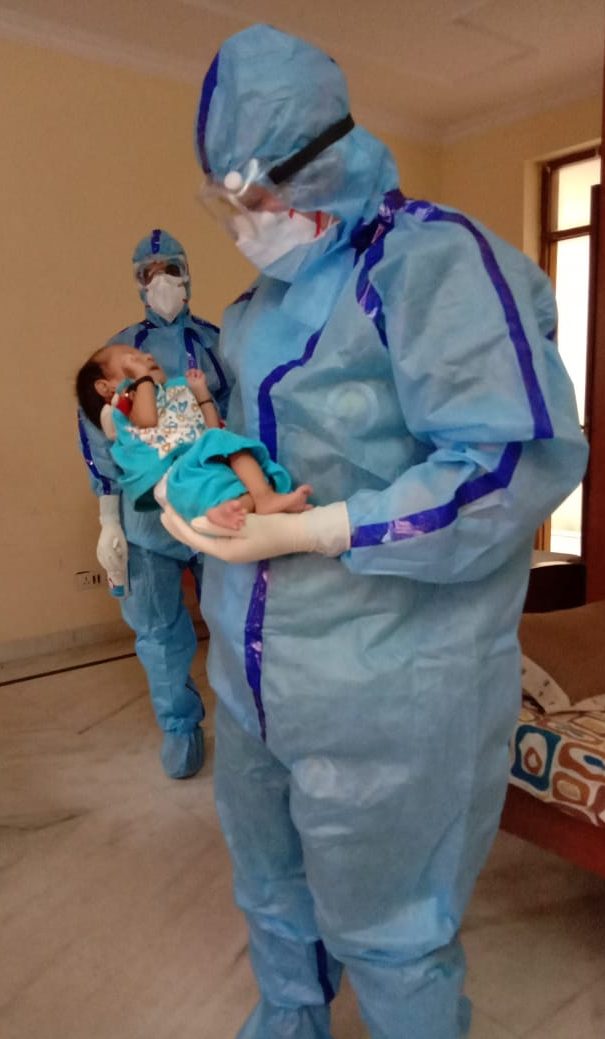The surge in COVID-19 cases across the country has brought its health care system to knees. When many countries were facing a shortage of resources like N95 masks and PPE, we got ample time to gird up and replenish. But the Indian government mainly focused on impregnating the supplies and equipment. Facilitating all the goods before the cascade of COVID-19 was definitely a good step but what about the human resource required to drive the fight against COVID-19?
The pandemic would have been better contained had the Govt. focused on key little things listed below:
1. Shortage of Nurses
When the situation worsened and numbers started rising, we noticed that there is a shortage of nurses with the knowledge and skill required to work in COVID areas. Yesterday, I received a call from the Delhi govt. health headquarter asking me to join work in recently established COVID centres. I had to refuse as I am already employed with the country’s largest COVID-19 centre. There was plenty of shortage and deficiency at various levels which needed to be addressed much before the pandemic. According to the Union health ministry data, there are just 1.7 nurses per 1000 population in India. That’s very less than the WHO’s prescribed minimum of 3. Lack of this foresight from our administrators has exposed the lacunae in our health care system.
2. No master rotation policy
As a part of the rapid action plan, wards and ICUs were converted into COVID areas. There was no contingency plan about allotting duties and rotating the staff accordingly to prevent infection and exhaustion. Had there been a plan regarding master rotation policy, allotment of protective equipment and screening of symptomatic individuals we would have been in a much better position in this battle.
3. No quarantine leaves
A few days back, over 4000 nurses at All India Institute of Medical Sciences, New Delhi have been protesting for better facilities at the workplace which includes reducing the number of working hours in PPE, providing accommodation and save commutation during odd hours. If this is the situation in the national capital and that too in a premier institute imagine the working conditions at the primary health care level. There is no uniform quarantine policy across the country leading to chaos. What’s the ideal solution? Do we need to rethink that reducing the working hours will actually solve the health issues faced by nurses? Should we demand for less working hours or quarantine leaves? I know it’s a catch 22 situation where one would expect us to stand tall and face the scenario risking our well being. Every hospital has developed its own way of deployment of nurses as per their convenience. A new disease requires new methods of approach, when will we find it?
Suggested approach
• Recruiting unemployed nurses in the COVID centres with proper remuneration and facilities.
• Redeployment of nurses across the states because there are regional differences in the severity of the disease outbreak, as well as in the availability of nurses per 1000 population
• Creating master rotation policy to safeguard nurses because working relentlessly in COVID areas makes them groggy and unhealthy. They are the backbone of health care.
• Adequate quarantine leaves as per the incubation period of the disease, stipulated by ICMR. This will not only help in reducing the health issues among nurses rather it helps in identifying the symptoms of the disease and preventing the spread of infection.
Conclusion
In conclusion, Covid-19 is a highly contagious disease, hospital-acquired infection of the virus is a huge threat for all the health care workers. Nurses being the frontline care providers with maximum exposure time are more vulnerable to infection. We believe that appropriate and adjustable hospital protocols and policies will play a vital role in management. Nonetheless, in spite of the aforementioned difficulties, India is in a better position than many of the developed countries due to sheer will power of its dedicated health care staff.
